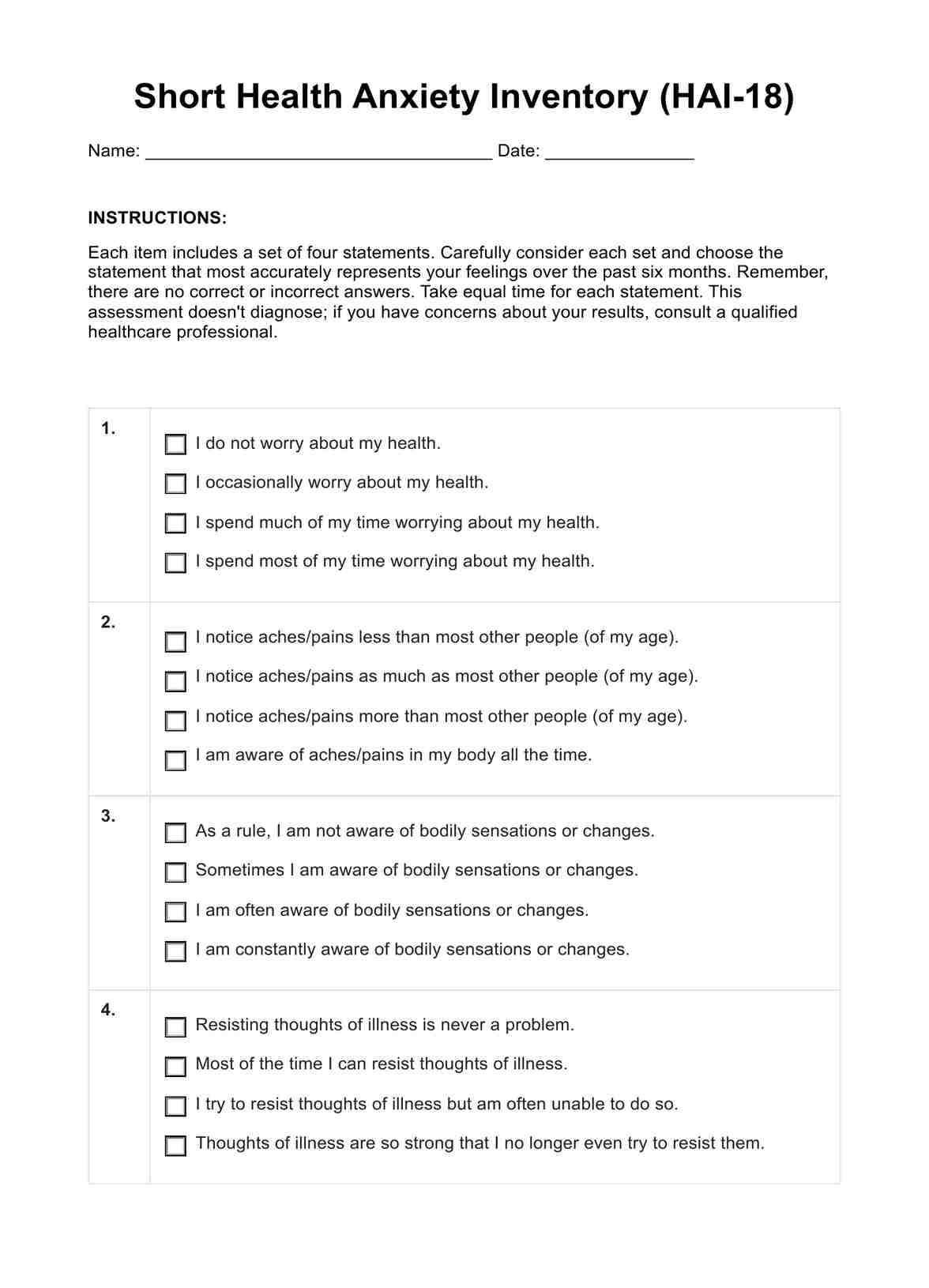On average, completing the Short Health Anxiety Inventory (HAI-18) takes about 5 to 10 minutes. It's designed for relatively quick responses to capture your immediate thoughts and feelings about health anxiety.

Short Health Anxiety Inventory (HAI-18)
Assess health anxiety levels with the Short Health Anxiety Inventory (HAI-18) using our free example and gain valuable self-awareness.
Use Template
Short Health Anxiety Inventory (HAI-18) Template
Commonly asked questions
Interpreting Short Health Anxiety Inventory (HAI-18) scores involves summarizing your responses. Higher totals indicate higher health anxiety levels. Some versions offer subscale scores for specific anxieties.
The Short Health Anxiety Inventory (HAI-18) is used in various contexts, including clinical assessments, research studies, therapy sessions, personal insights, and education. Its use timing varies based on specific needs and purposes.
EHR and practice management software
Get started for free
*No credit card required
Free
$0/usd
Unlimited clients
Telehealth
1GB of storage
Client portal text
Automated billing and online payments











